Stiff gear refers to a condition in which the gears of a mechanical device, such as a car transmission or bicycle chain, become difficult or resistant to movement.
This can occur due to various reasons, such as lack of lubrication, worn-out gears, or the presence of debris or dirt. If you’re an avid cyclist, you know how frustrating it can be when your gears start to feel stiff or unresponsive. Stiff gear can make it difficult to shift and can even cause damage to your bike. But don’t worry; fixing a stiff gear is easier than you might think.
You may have stiff gears when you’re having trouble shifting gears on your bike. A stiff gear means the gearbox won’t let the gears slide smoothly together, making gear grinding and transmission problems a reality.
Here we’ll show you how to fix a stiff gear on your bike with simple solutions. Plus, we’ll explain what a stiff gear is, what tools you need, and what Gear Adjustment Procedures you should follow to fix it. So be sure to keep reading for all the details.
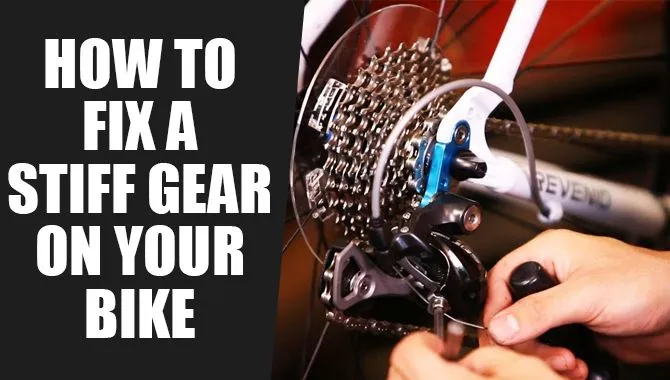
What Is Stiff Gear?
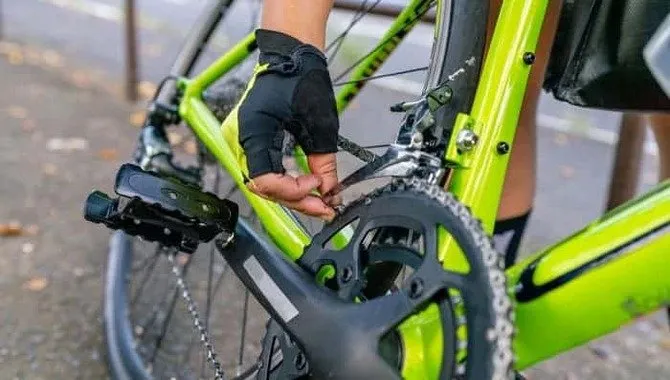
Stiff gear is a term used to describe mechanical components that are difficult or resistant to movement. It can refer to gears, bearings, or other parts of a machine that may be experiencing excessive friction or wear. This can lead to decreased efficiency and even damage to the machinery if not addressed. Stiff gear can be caused by a variety of factors such as misalignment, improper lubrication, or worn-out parts.
Stiff gear is generally defined as gears or other mechanisms that are difficult to move, turn, or operate. This can cause by a variety of factors, including worn-out bearings, damaged components, and insufficient lubrication. If you’re experiencing stiff gear syndrome (SGS), it’s important to take action and fix the problem as soon as possible.
Understanding the cause of a stiff gear on your bike
A stiff gear on your bike can be frustrating, but understanding the cause of the issue can help you fix it quickly and get back on the road. One common cause of stiff gear is a misaligned derailleur. The derailleur is responsible for moving the chain from one gear to another, and if it is not properly aligned, it can make shifting difficult or impossible.
Another possible cause is a dirty or worn chain. A chain that has not been cleaned or lubricated regularly can become stiff and difficult to move smoothly through the gears. Finally, a bent or damaged derailleur hanger can also cause stiffness in the gears.
Tools You Need For The Job.

Bike tools can make fixing a gear much easier and faster, so it’s important to have the right ones on hand. A few of the most popular items include a hex wrench (for adjusting spokes), an Allen key set (including a Torx socket), needle-nose pliers, and multi-tool.
A hex wrench is ideal for taking apart hubs or rotor assemblies. It has six different sizes that are labeled with letters and numbers, making it easy to find what you’re looking for.
The Allen key set includes Phillips and Torx sockets, which are helpful when assembling parts or repairing bikes. Needle-nose pliers can be used to remove wheel bolts without damage or hassle.
Simple Solutions on How To Fix A Stiff Gear On Your Bike
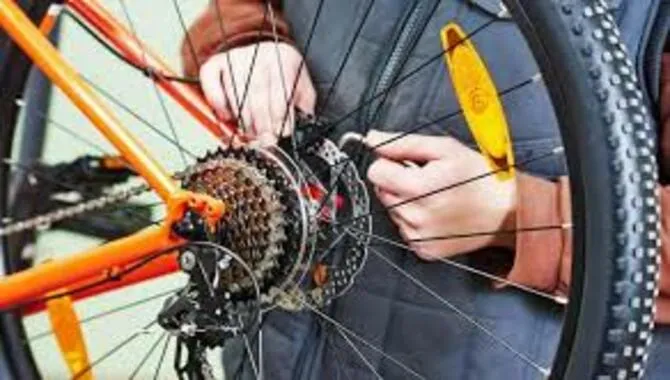
A dry or dirty chain can cause gears to stick and make shifting difficult. Applying lubricant to the chain can help reduce friction and improve shifting. The solution is to adjust the derailleur. The derailleur is responsible for moving the chain between gears, so if it’s not properly aligned, it can cause gears to shift poorly. If your gear is starting to feel stiff, there are a few simple solutions on How to fix a stiff gear on your bike that you can try.
- Adjust the gearing: If your gear is too tight, you can adjust it by loosening the bolts and turning the gears around. Make sure you do this in a way that doesn’t damage the gear or derail the bike.
- Check for broken or damaged parts: Sometimes, something as simple as a broken spoke can cause your gear to become stiff. If you notice any broken or damaged parts, take them off and replace them as soon as possible.
- Oil your gears: A small amount of oil can help lubricate the gears and make them more flexible. Apply it using a rag or a spray bottle, making sure to cover all the gears on both the hub and the wheel.
Seek Professional Help If You Are Uncertain About Fixing The Issue Yourself.
Fixing stiff gear on your bike can be frustrating. But it’s important to approach the issue carefully to avoid causing further damage. If you’re not confident in your ability to fix the problem. It’s best to seek professional help from a bike mechanic. They have the expertise and tools needed to diagnose and fix the issue safely and effectively.
Fixing stiff gear without proper knowledge or tools can cause even more damage. Which can be costly to repair. Don’t risk further damaging your bike – if you’re uncertain about fixing the issue, contact a trusted mechanic for help.
Gear Adjustments For Bikes
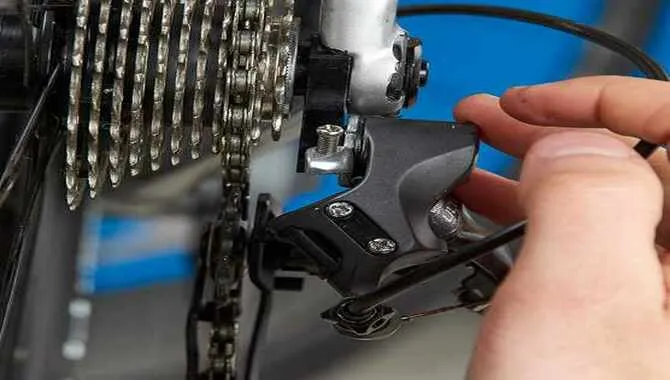
Regarding bike maintenance, gear adjustments are an essential part of keeping your ride running smoothly. The first step is to identify any issues with your gears, such as skipping or slipping. Proper gear adjustments not only make for a smoother ride. But also helps extend the life of your bike’s components and improve overall performance. So don’t neglect this important aspect of bike maintenance. Gear adjustments can be tricky, but with a little bit of practice, they’ll become second nature. Before you start:
- Make sure that the bike is in the correct position and that all of the bolts on the gear shifter are loose.
- Rotate the handlebar to point in the direction you want it to go (forwards or back), and reattach the handlebar assembly.
- Re-install your gearshift into its housing and tighten down any screws or bolts that were loose.
Symptoms Of A Stiff Gear
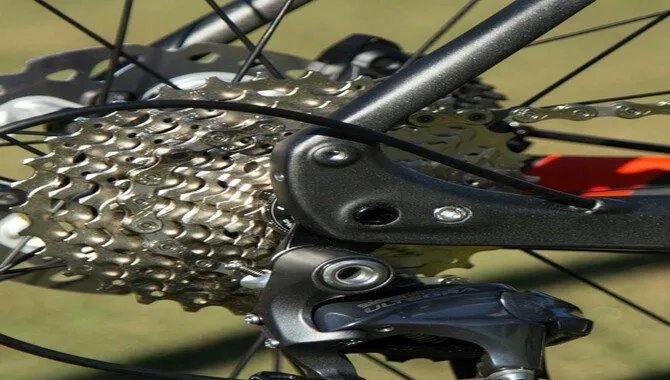
Bicycles are a great way to get around, but they require regular maintenance to run smoothly. One of the most important aspects is gearbox and brake servicing.
If you notice any of the following symptoms, it’s time to take your bike in for service: difficulty shifting, poor acceleration, and poor braking. Gearboxes can often be fixed at home using simple techniques, so don’t wait – fix it before it becomes an issue.
In addition to gearbox and brake servicing, keep your bike in top condition by regularly servicing the gears and brakes. This will ensure that your bike runs smoothly and can handle any terrain you might encounter.
Troubleshooting For Fixing Stiff Gears On Bikes
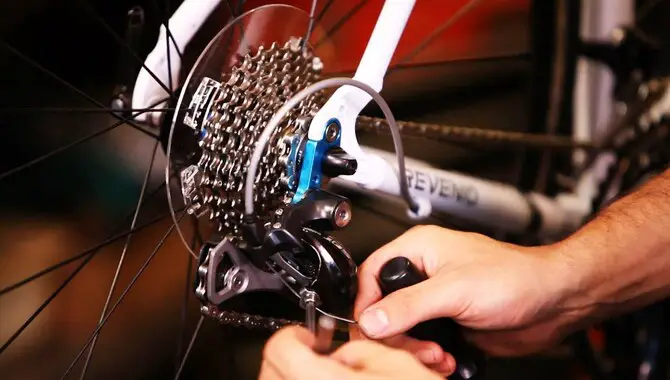
Stiff gears on bikes can be a frustrating experience for any cyclist. This problem can occur due to several reasons, such as a worn chain, low lubrication, or a bent derailleur hanger. It is important to address this issue promptly as it can affect the overall performance and ride quality of the bike. By addressing stiff gears promptly, cyclists can ensure a smoother and more enjoyable riding experience. Here are some steps that may help you to troubleshoot and fix stiff gears on your bike:
- Check the transmission fluid level and make sure it is full or at least half-full. Transmission fluid absorbs moisture, which can cause Gears to become stiff.
- Clean the Gearbox’s internals with a good quality degreaser like brake cleaner – This will remove any dirt, grease, or grime that may be built up over time and contribute to Gearbox stiffness. Make sure all traces of cleaner have been removed before continuing。
3. Disassemble each gear separately if possible. Remove any screws (or other fasteners) ・. Inspect for metal shavings/debris buildup from machining operations etc.
Tips For Avoiding A Stiff Gear In The Future
If you want to avoid stiff gear in the future, there are a few things you can do to help maintain your vehicle’s transmission. First and foremost, make sure to follow the manufacturer’s recommended maintenance schedule for your car. Regularly changing the transmission fluid and filter can help prevent buildup and keep the gears running smoothly.
Another tip is to avoid sudden shifts in gear or excessive acceleration. This can put unnecessary strain on the transmission and cause damage over time. Instead, try to shift gears smoothly and gradually, allowing the transmission to adjust more easily.
It’s also important to pay attention to any warning signs that your transmission may be having problems, such as strange noises or difficulty shifting gears. Addressing these issues early on can help prevent more serious problems down the line.
By following these tips and taking good care of your vehicle’s transmission, you can help ensure that you won’t have to deal with stiff gear in the future.
Conclusion
Having a stiff gear on your bike can be a frustrating experience, but fortunately, there are several steps you can take to fix this issue. By following the troubleshooting tips outlined in How to Fix a stiff gear on your bike, you’ll be able to diagnose the cause of the stiffness and make the necessary adjustments or repairs.
Whether it’s a simple cleaning or lubrication, adjusting the derailleur, or replacing worn-out parts, fixing a stiff gear will help ensure smooth and enjoyable rides in the future. Don’t let a stiff gear hold you back from enjoying your bike to its fullest potential. Get your gears working smoothly again and return to the road or trail.
Frequently Asked Questions
What Are Some Common Causes For A Gear To Become Stiff?
There are a few common causes for gears to become stiff, and the best way to fix them is typically by restoring their original flexibility. The most common causes of gear stiffness are corrosion (due to salt or other elements getting into the gear’s metal parts and wreaking havoc). Worn or broken internals.
How Can I Fix My Gear If It’s Becoming Stiff?
There are a few potential causes of stiff gears; the most common is rust. If your gears are starting to become stiff, the first thing you should do is inspect them for rust. If there’s any visible rust, you’ll need to take action to address it before it gets worse.
What Can I Do To Adjust The Gear On My Bike?
You can do a few things to adjust your bike’s gear. First, make sure the chain is properly lubricated. Apply a light layer of grease to the chain every few rides to prevent it from sticking and making noise.
Check the alignment of your gears. A loose wheel or a broken chain can cause problems with gear alignment, so it’s important to maintain it as best as possible.
What Are The Best Bicycle Repair Tools For Fixing Bike Gears And Brakes?
Bicycle repair tools can include a tire lever, spoke wrenches, chain whip, spanner wrench set, and Allen key.
Should I Lubricate My Gears Every Time I Ride My Bike?
Depending on the condition of your bike and its gears, the type and amount of lubrication for your gears will vary. General recommendations for lubricating gears include applying a thin layer of lubricant every few months or when the gear feels ‘tight.’ You can also add a little oil to your chain if it starts to make clicking or grinding noises.

I am passionate about writing blogs about bikes. I love riding my bike and love talking about it even more. My blog is the perfect place for anyone who loves biking as much as I do. Come check it out and learn some tips and tricks from me!